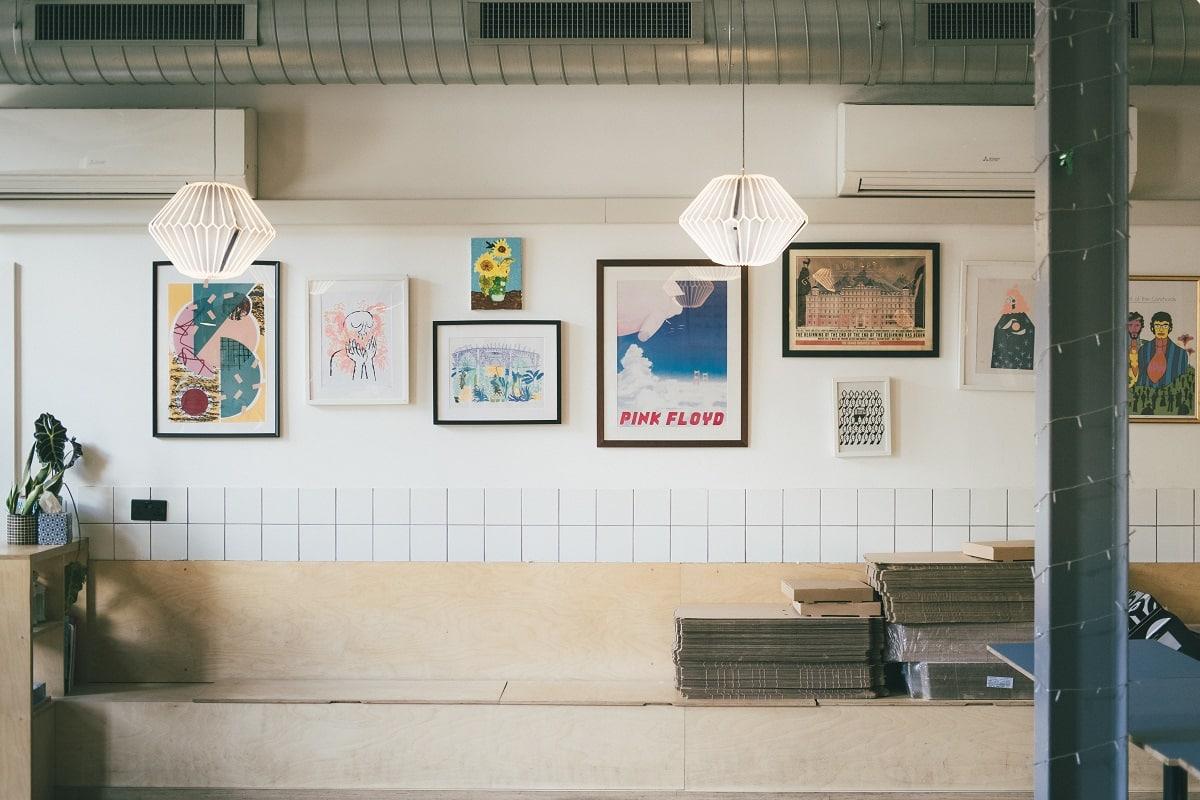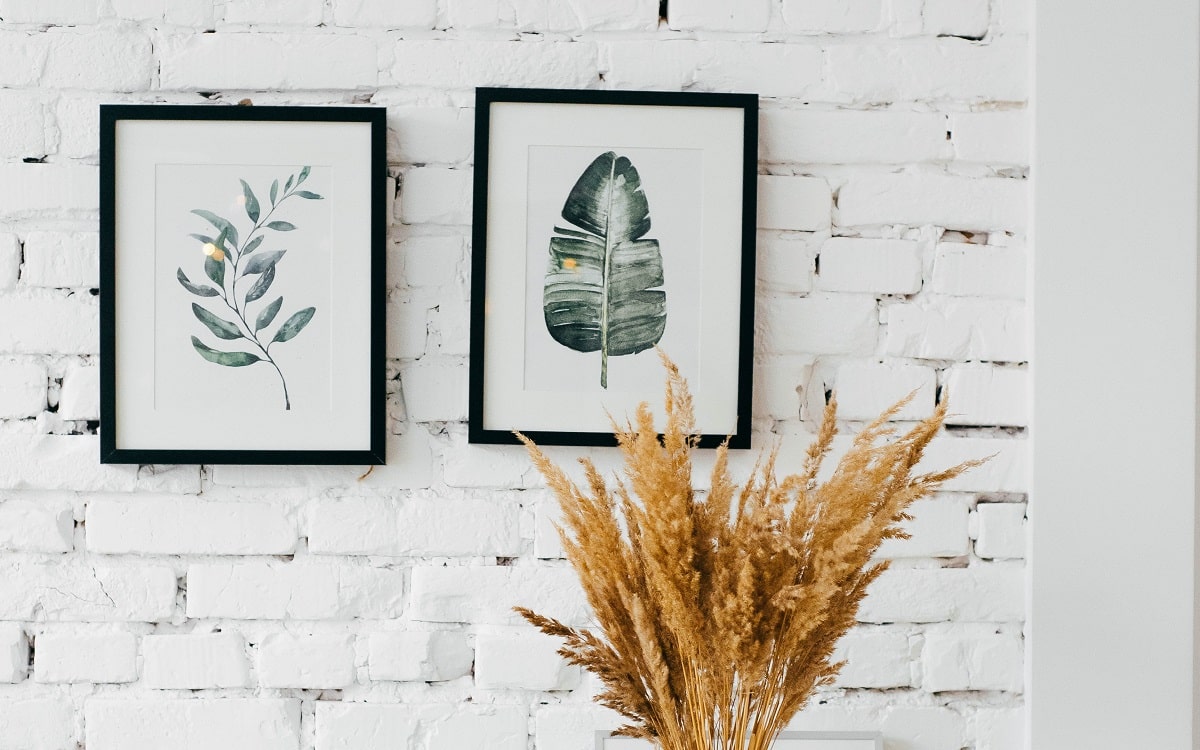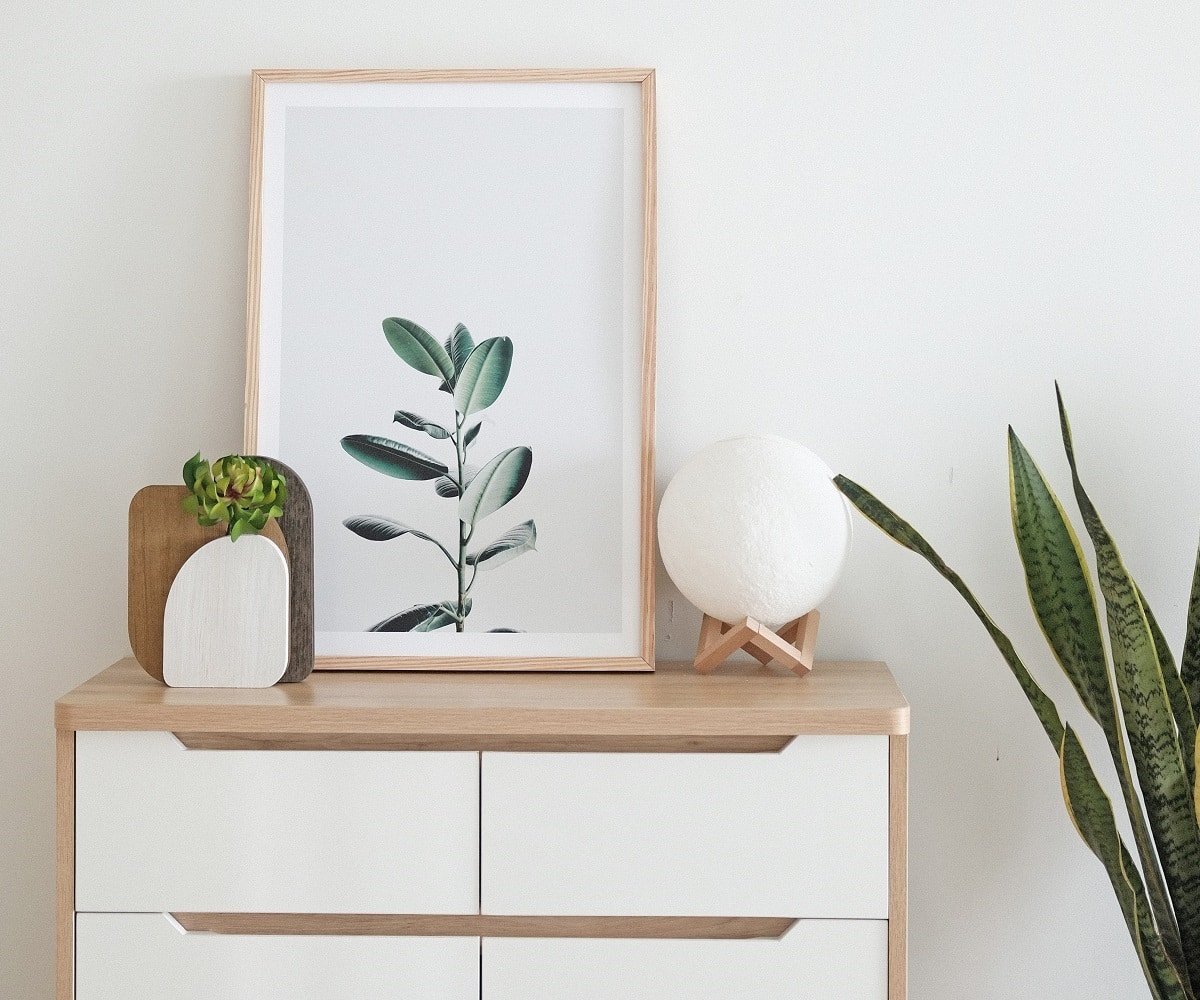Art is an expression of one’s thoughts, creativity, and passion!
And thanks to the advancement of technology over the years, we can now present them to the world on various platforms. This has also resulted in the popularity of the canvas art printing business, which helps artists sell their artwork, to earn an income.
Nowadays, it is not uncommon to find top notch printer for art prints in every other household. If you don’t, that’s fine, you might not need to know the details of laser printer vs inkjet for art prints either. But, what you might want to know is how you could sell your art and how to make art prints profitable.
So, ready to take that leap of faith and establish your very own printing business? Well, you’re in the right place! This guide is all about canvas wall art prints and how to start a wall art print business model.
We’ll help you with the marketing strategy and more so that your profit margins in the advanced stages of your business are always high.
How To Start Your Own Canvas Printing Business?

If you’ve been ruminating on starting a canvas or wall art print business, this is a good way to do so. In the wall art print business, there are usually two extremes. While there are low cost providers who work for very low prices and provide cheap prints, you also have business owners who make customized products at sky-high rates. Thus, there’s a dearth of quality products at affordable rates.
Your future wall art print business can fill that gap; even though, in the initial phase, profits might not be that much. However, setting up a wall art print gig isn’t as easy as it sounds, and there’s a lot to consider beforehand.
Some of the things that you’ll have to manage are launching the business, facing up to the competition, adapting to consumer needs, and more. So, let’s take a look at some of the important factors that go into starting up such a business!
1. Choosing A Business Model
One of the first things to be done while starting up a wall art print business is to figure out where you’re going to be working from. Many businesses have completely shifted to an online mode of operation but you can opt to have your business function offline as well.
A. Offline Business Model
It allows people to come and see the pieces for themselves, and it also lets one explain their art in detail to the customer. However, the operation costs of an offline business are usually significantly higher than those of an online one.
You’ll have to rent out a space for the art to be displayed, and you might have to pay a license fee for the same. Additionally, considerable money would go into hiring employees and paying them transportation allowances for commuting to your workshop/gallery.
B. Online Business Model
Running an online business, on the other hand, can save you rental space costs, transportation allowances, and fuel-related charges. What’s more, you need a minimal setup to get an online business up and running.
It is also better able to cater to the needs of global customers since there is no bar on who your products are seen by. In fact, Vistaprint and Custom Ink are two major players in the print industry that run web-to-print stores.
Their customers visit their websites and pick the print they want personalized. After that, they simply need to pay, and boom! The order is placed.
Some other benefits of having an online business model are being able to promote extensively on social media and having fewer face-to-face interactions with people. You’ll also be able to save a lot of time this way since you won’t need to pre-make any designs. Your customers can simply decide what they want, and this way, you’ll have greater profit margins too.
2. Formulate A Business Plan
Setting up a wall art print business is a big step because you’ll finally be stepping into the big, scary world of entrepreneurship. But try not to be scared by this fact because art is subjective, and there’s always going to be someone who’ll find value in what you do!
To make things easier for yourself and your business, map out a detailed business plan. The plan doesn’t have to be a professional-looking blueprint or anything; it can just be a simple layout of whatever you hope to accomplish from the business.
Start by getting a notepad or your laptop and scribble/type any idea that you may have. In fact, many websites offer an idea board, so you can use those as well to make a record of your plans. Plus, if you feel like you need some further motivation, there’s always Pinterest.
3. Define Your Art Practice
Having a clear set of goals and aspirations before you embark on a wall art print business is extremely important. We recommend having a clear idea of your long-term and short term goals, as well as a precise definition of what success means to you.
You should also know what you hope to get out of a career in art. Is it recognition, money, or simply a way to practice your hobby? There is no right or wrong answer, and each artist can have their own reasons. However, visualizing your art career in this manner will help you plan what comes after.
In addition to that, starting a new business can be nerve-wracking, and defining your goals and mission can make the process a lot easier to manage. Down the line, you might need an “About” section on the business website, and having a clear business idea will help you with that.
4. Analyze The Market
Once you’ve settled upon a robust business plan for your wall art print business, do some research on prevailing market trends. This step is extremely vital to the business because if you understand what the market wants, there’s nothing stopping you from raking in oodles of money. Here’s how to do market analysis:
A. Identify Your Target Audience
This helps with marketing and advertising your products. To scope out your target audience, create an excel sheet and enter in details like interests, gender, and age to bifurcate the bits that are essential for you. This will aid you with understanding who wants what and how you can cater to a wide audience/a niche market based on what you want.
We recommend using Facebook Insights for further help with the identification of target audiences.
B. Study The Competition
Knowing what your competitors offer will be conducive to selling your own products. You might notice that there are wall art print businesses that offer their products at exorbitant rates, and yet others that sell their items at throwaway prices. The ones that sell at an affordable rate might not have great quality.
So, identify the gap in the market and fill it with your products!

5. Price Your Products Carefully
This can be one of the toughest parts of running a business because it’s very common to see people not know the value of their own work. Settling upon an acceptable profit margin also becomes a bit of a challenge. But you must be very particular about setting a proper profit margin because all professionals need to earn money!
You should also be careful not to give in to the myth of the “struggling artist”. There is no beauty in struggle, only pain. A sound business strategy shouldn’t leave you struggling to make ends meet, which is why pricing your art appropriately is so important.
Here are seven things to keep in mind while deciding on a price for your art:
-
- Do your research and see how much your contemporaries make.
- Give yourself a living wage and not just enough to barely get by.
- Have a consistent pricing model and try not to inflate/ deflate the price too often since this might hamper your equations with customers and art gallery owners.
- Don’t give in to imposter syndrome and price your art based on how much you love it.
- Have a pricing range because this will help you get customers from all income brackets.
- Have transparent pricing and don’t spring up hidden charges right at the end of the transaction.
- Be prepared to explain your art and its pricing.
Remember If you don’t have a convincing reason behind the pricing model, customers will see through the ruse, and they might end up dropping the idea of buying something. That said, keeping the above things in mind will prevent you from running into a problem.
Here are two other ways to further simplify the pricing process:
A. Know Your Costs
Know the exact prices of the materials used to make the art, and make sure that they are covered when you price it. Apart from that, factor in how much time went into making the product, how much it cost to be shipped, how much you paid to frame it, etc.
Condense these costs into cost per hour, and move ahead with pricing this way. To help you get started, refer to the US Department of Labor’s code on average hourly wages for a fine artist.
B. Try An Art Pricing Formula
These formulas use different factors to determine how the art should be priced. For instance, some of them base it on the size of the work, whereas others take into account labor, time, etc. But irrespective of the formula chosen by you, ensure a sizable profit margin once all the aspects have been factored in.
6. Build An Online Presence
Once the research bit is over, commence with creating an online presence for your brand. Start with registering the name of your business on the internet and creating a brand image. While picking a name, choose something that reflects the vision you have for your brand.
For instance, if you have a business that deals with personalized products, mention something about it in the name. Once decided, head over to GoDaddy and register it.
Now comes website creation! The first step to creating a visually pleasing yet informative website is to select an eCommerce platform for supporting it. This is an important choice since the platform will be the foundation of your store. Here are some popular options you could look into:
A. Magento Product Designer Tool
Magento has been around for years and is one of the most reputed platforms out there. It supports thousands of thriving businesses with its roster of features. One of the greatest highlights of using Magento is the flexibility offered by the platform. You can customize your website and add features as and when you need them!
Moreover, Magento has the option of collaborating with Brush Your Ideas, which is a nifty designing tool.
B. Shopify Design Tool
Shopify is another excellent option for those looking for plenty of customization options. It has a basic and an advanced version, with even the basic one offering many useful features, such as SEO options and advanced analytics.
The tool is also compatible with Brush Your Ideas and integrates well with it.
C. WooCommerce Design Tool
WooCommerce is another popular platform for those looking to set up a wall art print business. It is essentially a WordPress plugin that helps launch a-stores. Its greatest advantage is that it is free, so anyone who is short on funds and is looking to break into the art industry can use it. What’s more, the platform has plenty of themes and offers a lot of room for customization.
Apart from the above, WooCommerce offers integration with other design tools too. Lastly, you can contact the WooCommerce team for a live demo of the platform.
7. Work On Customization Options
Art is subjective, which means what suits one’s palette may not suit the others. This is why it is important to allow room for customization when running a wall art print business. A one-size-fits-all approach won’t be viable in the long run.
You have many examples before you of successful brands that have leveraged the power of customization to raise their brand value. Tesla is one such company since it allows customers to cherry pick features they’d like in their cars. Another example is Nike, which is well-known for handing over the reins for designing to its customers.
Offering your customers flexibility will increase their brand loyalty and, in turn, boost your profits. You’ll also be able to gain an edge over the competition.
How To Offer Customized Wall Art
Customizing a wall art piece is relatively easy. The best way to do it is to integrate a designer tool with the e-store you set up. This way, your customers will be able to design their products online and then place orders for them. All that you’ll have to do is ensure that you print them out well.
Generally, when selecting a design tool, you’ll need to make sure that it offers a mix of both functionality and ease of use. Here are some of the tips you can keep in mind while picking one:
A. Mobile Responsiveness
Many users find it a chore to open their laptops to access a website. Thus, it is important that the design tool is mobile-friendly. Before buying a tool, take a demo of it and check whether it works well across different devices.
B. Room For Customization
A design tool should be flexible enough to offer plenty of scope for personalization to the customer. Features like color, design, sizing, etc., need to be there for the tool to be successful.
The tool itself should have some room for revision. You may want to expand the scope of product design after a point in time, so the tool should allow for that to happen.
C. Powerful Backend
Having a strong backend is integral to the functionality of the tool since changes can be made, and options can be added only if the backend can accommodate them. To this effect, conduct regular checks to see if the backend is working properly.
There are many options available for design tools available online; however, Brush Your Ideas is the most solid option. It is compatible with most major eCommerce platforms like WooCommerce, Magento, Shopify, and Prestashop and additionally offers API connectors.
This means that irrespective of the platform you build your website on, the tool will connect seamlessly with it. What’s more, online reviews report that the tool is easy to use.
8. Selecting A Printing Method
Narrowing down on a printing method is also an important part of the business. This is because once customers place their orders, the onus is on you to print them out in exactly the same way! There are two ways of doing this – you can set up the printing apparatus at your own place and take the prints.
This is a good method for when you already have a designated space for running your business offline. However, it can be a hassle to procure machines and related paraphernalia. The other way is to outsource the job of printing by collaborating with a good-quality print service provider.
When it comes to the quality of the prints, there are different printing techniques that you can use. Here are some commonly used printing methods that you can pick from:
A. Offset Printing
This is a fairly common printing style for canvas prints. Here, the inked image is moved from a plate, then to a rubber blanket, and lastly onto a canvas print. The significant highlight of this printing style is that it is affordable and can print large batches of canvas prints easily. Moreover, if a customer wants monochrome prints, then they would be available at an even lower price.
B. Inkjet Printing
This is another popular printing technique that uses numerous tiny nozzles or guns to shoot little drops of ink onto the page. This action recreates the image chosen by the user onto a canvas. The major advantages of this printing style are that it is cheap, good quality, and doesn’t fade out with time.
C. Dye Sublimation
This printing method offers a permanent finish, with the colors getting embedded deep within the fabric/substrate as opposed to on the surface. Though not as widely used, it produces good-quality products and can be a cheap option for the mass production of wall art prints.
9. Marketing Your Store
Starting a wall art print business can take some time, even as much as half a year or so. However, if you get things right, then you can start seeing profits as early as a year in. The biggest key to achieving a wide profit margin is a loyal and steady clientele, and there’s no better way to achieve that than marketing your business and items well. Here are some of the ways you can market your wares online:
A. SEO-Optimize Your Online Store
SEO is the secret sauce to running a successful online business. An SEO-optimized website shows up on Google searches and is able to draw in many potential customers. To optimize your website according to search engine algorithms, ensure that your alt tags, meta details, and URLs are in place.
Apart from that, ensure that the content on your website is engaging and crisp. Upload blogs, articles, and informative how-tos, and make sure that all content on the site is original and un-plagiarized. This will help you attract hordes of viewers, aka potential buyers and convert them into repeat customers.
B. Launch Google Ads Campaigns
If you have the capital, tie up with a marketing agency and launch a Google Ads campaign. This gives instant results and leads to a lot of revenue for an online store. To do this, you can set up a Google Ads account and allot a budget for the campaign. Post that, you can formulate campaigns based on bidding and keywords.
C. Harness The Power Of Social Media
Being active on social media is a great way to promote your business. Apart from regularly posting about the business on your personal account, ensure that you make a separate page for it too.
Further, make regular content and post lots of pictures and videos to stay connected with your audience. Tiktok and Instagram reels are pretty popular among millennials and the Gen-Z, so if they’re your target audience, make sure you post some of those!
Lastly, pay attention to customer feedback and use it to improve the quality and overall appeal of your products.

Tips To Grow A Successful Wall Art Print Business
The first milestone that every successful business has to reach is the break-even point. This is the juncture where you make no losses and marginal profits. In order to reach this point, keep analyzing your website’s performance from time to time after launching it.
After a few months, you’ll be able to accurately gauge the number of orders that come in. And, on the basis of that, you can tweak how many items are manufactured by you. Here are some other things you can do to grow your business:
-
- Regularly scope out the competition on eBay, Etsy and other such platforms to get an idea about designs, pricing, etc.
- Choose the businesses you outsource to very carefully.
- Appraise your prices regularly and offer discounts when required.
- Try designing some unique templates on your own since those will make your brand stand out.
- Keep updating your product design tool and constantly check it for speed and performance.
- Once you get to the point where your order inflow has stabilized, take risks and expand the range of your products.
- Take regular feedback from customers about their experience with the company, such as quality complaints, customer service, etc.
- Invest heavily in social media promotion, especially Facebook, Instagram and Tiktok.
- Talk up your business to people you meet, and network with them to spread the word.

Wall Art Print Business Final Thoughts
Setting up a wall art print business is more than just printing out images on the internet and selling them.
It is about tailoring an experience and a product that the customers will love and hold dear for ages to come. It’s also about exploring your own creativity and innovating unique designs that will come to be synonymous with your brand.
And who knows, maybe with time, your business can expand enough, allowing you to hire other people too!


